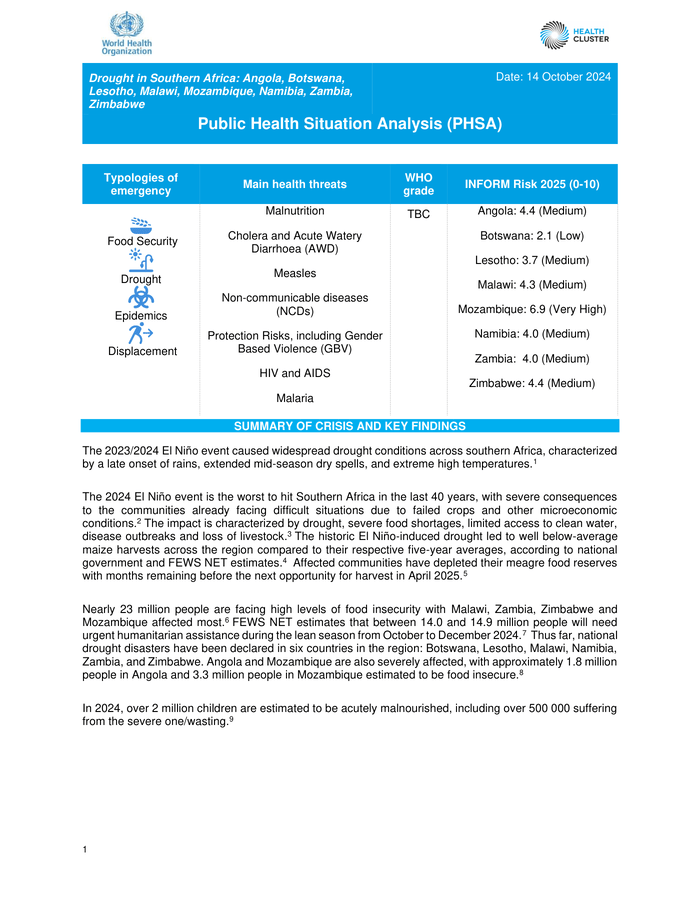Attachments
SUMMARY OF CRISIS AND KEY FINDINGS
The 2023/2024 El Niño event caused widespread drought conditions across southern Africa, characterized by a late onset of rains, extended mid-season dry spells, and extreme high temperatures.
The 2024 El Niño event is the worst to hit Southern Africa in the last 40 years, with severe consequences to the communities already facing difficult situations due to failed crops and other microeconomic conditions.2 The impact is characterized by drought, severe food shortages, limited access to clean water, disease outbreaks and loss of livestock. 3 The historic El Niño-induced drought led to well below-average maize harvests across the region compared to their respective five-year averages, according to national government and FEWS NET estimates. 4 Affected communities have depleted their meagre food reserves with months remaining before the next opportunity for harvest in April 2025.
Nearly 23 million people are facing high levels of food insecurity with Malawi, Zambia, Zimbabwe and Mozambique affected most.6 FEWS NET estimates that between 14.0 and 14.9 million people will need urgent humanitarian assistance during the lean season from October to December 2024.7 Thus far, national drought disasters have been declared in six countries in the region: Botswana, Lesotho, Malawi, Namibia, Zambia, and Zimbabwe. Angola and Mozambique are also severely affected, with approximately 1.8 million people in Angola and 3.3 million people in Mozambique estimated to be food insecure.
In 2024, over 2 million children are estimated to be acutely malnourished, including over 500 000 suffering from the severe one/wasting.
These severe weather shocks have led to the displacement of thousands of people, disease outbreaks, food shortages, water scarcity and significant impacts on agriculture. The drought occurred in an environment already vulnerable to various epidemics and medical emergencies, including cholera and measles. The emerging risk of mpox may potentially divert resources and response efforts away from the drought response in some affected countries.
The drought came at a time when the region was grappling with one of its worst cholera epidemics in decades. Although the situation has relatively “stabilized”, water shortages are undermining hygiene and sanitation efforts. The risk of cholera outbreaks remain in countries such as Malawi and Mozambique.
The challenges brought on by drought may increase the risk of HIV and AIDS transmission, mental health issues, and gender-based violence, all of which underscore the urgent need for enhanced preparedness and response mechanisms. The combined effects of El Niño, cholera outbreaks, conflicts, and climate change have burdened and disrupted health systems across Southern Africa, significantly impeding access to essential and lifesaving sexual and reproductive health services.
Over one million people have been internally displaced in the context of disasters and climate change mainly from Malawi, Mozambique and Zimbabwe.
Source link : https://reliefweb.int/report/angola/drought-southern-africa-angola-botswana-lesotho-malawi-mozambique-namibia-zambia-zimbabwe-public-health-situation-analysis-phsa-14-october-2024
Author :
Publish date : 2024-10-14 08:05:00
Copyright for syndicated content belongs to the linked Source.
